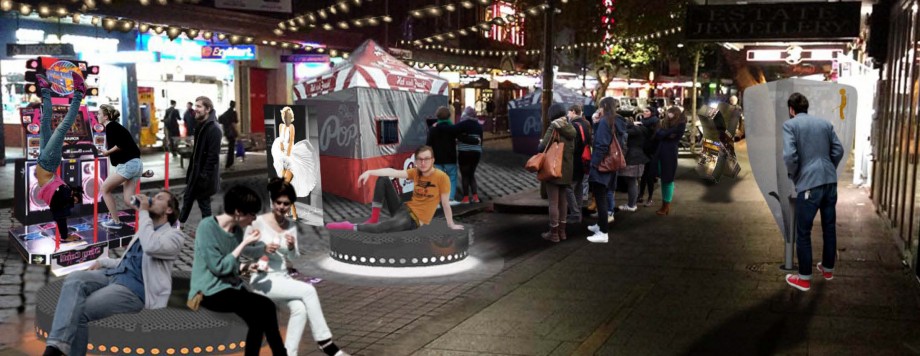1.3 The Art of Framing
1.3.4 Develop metaphors
A metaphor is an implicit comparison between two things and, in general, provides new insights. You project a different, often alienating mental concept onto the problematic situation to explore new ways. For some reason, we instantly recognize and embrace metaphors that seem to work well, like ‘a black sheep’. Cognitive scientists suspect that the foundation of our entire thinking is even based on metaphors (Lakoff and Johnson, 1980).
So, developing powerful metaphors, whereby you see the problematic situation as something else, are helpful to reframe your project completely. You see X as Y, which offers new and rich insights. Lately, scientific interest in metaphors for design thinking is rising rapidly, mainly caused by the appearance of the book Frame Innovation (Dorst, 2015).
An excellent example of how a metaphor changed the perspective on a social problem and resulted in a range of practical solutions is the Designing Out Crime project. In this project, they designed approaches to make the popular nightlife area in Sydney, Kings Cross, safer for its visitors. In that area, thousands of young people enjoyed themselves at night during the weekends. Unfortunately, crime rates were soaring simultaneously. Rather than seeing the visitors as potential criminals, which would require more police and surveillance cameras, they reframed the situation. They reframed it in such a way that they saw Kings Cross as a music festival. In both situations, thousands of young visitors were trying to have a good time. But musical festivals are much safer, more cheerful, and better managed. What did a music festival have that Kings Cross did not? Crowd control, good transport, public toilets, a dense program of events, and food trucks, to name a few. By using the principles of event management it became possible to ensure that the people who went to Kings Cross could have a good time. More importantly, they tested practical ideas, such as having small sports tournaments in the streets at night.
Go here to learn more about this project: KingsCross
 |
|
An image from the project Kings Cross
|
![]() Case Study: Food exhibition
Case Study: Food exhibition
For a food exhibition, one could explore metaphors, like ‘fetishism’. Suddenly, you frame food and eating as a way to fulfill our (sensual?) enjoyment we experience from tasting, smelling, and licking food. This way, you can showcase how food is presented in ways that are not only extraordinary but arouse feelings of craving and lust. Such a frame results in an entirely different kind of exhibition.
References
- Lakoff, G., & Johnson, M. (2008). Metaphors we live by. University of Chicago press.
- Dorst, K. (2015). Frame innovation: Create new thinking by design. MIT press.

